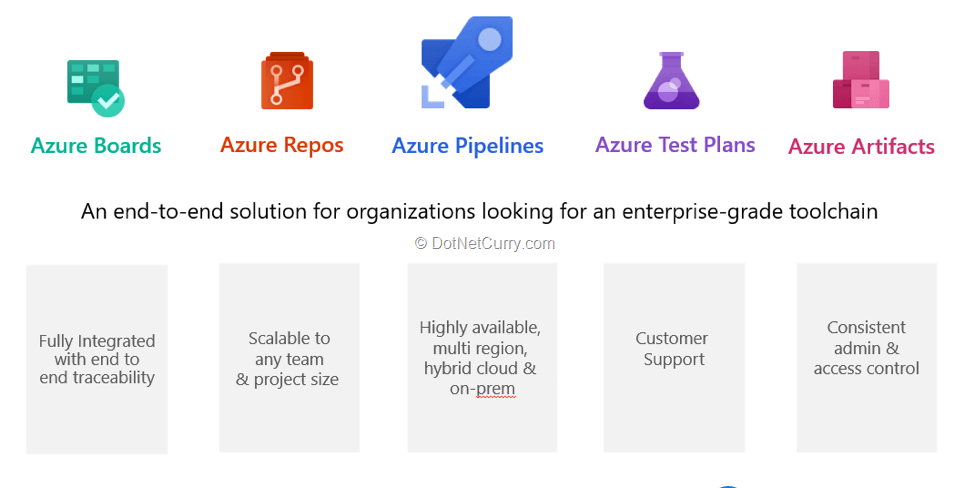

- #USE AZURE DEVOPS WITH VISUAL STUDIO 2017 FOR MAC HOW TO#
- #USE AZURE DEVOPS WITH VISUAL STUDIO 2017 FOR MAC INSTALL#
- #USE AZURE DEVOPS WITH VISUAL STUDIO 2017 FOR MAC CODE#
- #USE AZURE DEVOPS WITH VISUAL STUDIO 2017 FOR MAC DOWNLOAD#
#USE AZURE DEVOPS WITH VISUAL STUDIO 2017 FOR MAC CODE#
Write-Host "#vso$key" Infrastructure as Code $key=(Get-AzureRmStorageAccountKey -ResourceGroupName $(TerraformStorageRG) -AccountName $(TerraformStorageAccount)).Value # Using this script we will fetch storage key which is required in terraform file to authenticate backend stoarge account I then add this code to get the access key and overwrite the variable. With those created, I go back to Tasks and add an Azure PowerShell task To create the variables I clicked on the variables tabĪnd then added the variables with the following names TerraformStorageRG, TerraformStorageAccount and location from the previous task and TerraformStorageKey for the next task. We don’t want to store that key anywhere but we can use our Azure DevOps variables and some PowerShell to gather the access key and write it to the variable when the job is running. The next thing that we need to do is to to enable the job to be able to access the storage account. This will create a Resource Group, a storage account and a container and use some variables to provide the values, we will come back to the variables later. Inside the script block I put the following code # the following script will create Azure resource group, Storage account and a Storage container which will be used to store terraform stateĬall az group create -location $(location) -name $(TerraformStorageRG)Ĭall az storage account create -name $(TerraformStorageAccount) -resource-group $(TerraformStorageRG) -location $(location) -sku Standard_LRSĬall az storage container create -name terraform -account-name $(TerraformStorageAccount) I choose my Azure subscription from the first drop down and choose Inline Script from the second I click on the + and search for Azure CLI.Īnd click on the Add button which gives me some boxes to fill in. (This is not absolutely required just for building my presentation environments and this might not be the best way to achieve this but for right now this is what I do and it works.) Stateįirst we need somewhere to store the state of our build so that if we re-run it the Terraform plan step will be able to work out what it needs to do. This would be useful for testing different OS’s for example but for right now I shall just name it properly. I could also choose a different type of Agent for different jobs within the same pipeline. We will use the default agent for this process.Ĭlicking on Agent Job 1 enables me to change the name of the Agent Job.
#USE AZURE DEVOPS WITH VISUAL STUDIO 2017 FOR MAC DOWNLOAD#
Azure DevOps gives 7 different hosted agents running Linux, Mac, Windows or you can download an agent and run it on your own cpus.

The next page allows us to give the build a good name and choose the Agent Pool that we want to use. See the Configuration as code choice? We will come back to that later and our infrastructure as code will be deployed with a configuration as code 🙂 I chose GitHub, authorised and chose the repository. Once I clicked on pipelines, this is the page I sawĬlicking new pipeline, Azure DevOps asked me where my code was I will be using GitHub to share the code that I have used. I have created a project in Azure DevOps for my Presentation Builds. I use the former in “work” situations and the second for my presentations environment. I could just alter the code and commit the change and trigger a build or I could create variables and enable them to be set at the time the job is run. If I want to create the same environment but give it tags for a different event (This way I know when I can delete resources in Azure!) or name it differently, I can use Azure DevOps and alter the variables. Last time I created an Azure SQL DB and tagged it with DataInDevon (By the way you can get tickets for Data In Devon here – It is in Exeter on April 26th and 27th) This scenario though is to build environments for presentations. I can then even set it to automatically deploy new infrastructure when I commit some code to alter the configuration. I would rather give the code to a build system and get it to run it.
#USE AZURE DEVOPS WITH VISUAL STUDIO 2017 FOR MAC INSTALL#
There was a lot of install this and set up that. Of course, I havent stopped there, who wants to manually run code to create things.

#USE AZURE DEVOPS WITH VISUAL STUDIO 2017 FOR MAC HOW TO#
In my last post I showed how to create a Resource Group and an Azure SQLDB with Terraform using Visual Studio Code to deploy.


 0 kommentar(er)
0 kommentar(er)
